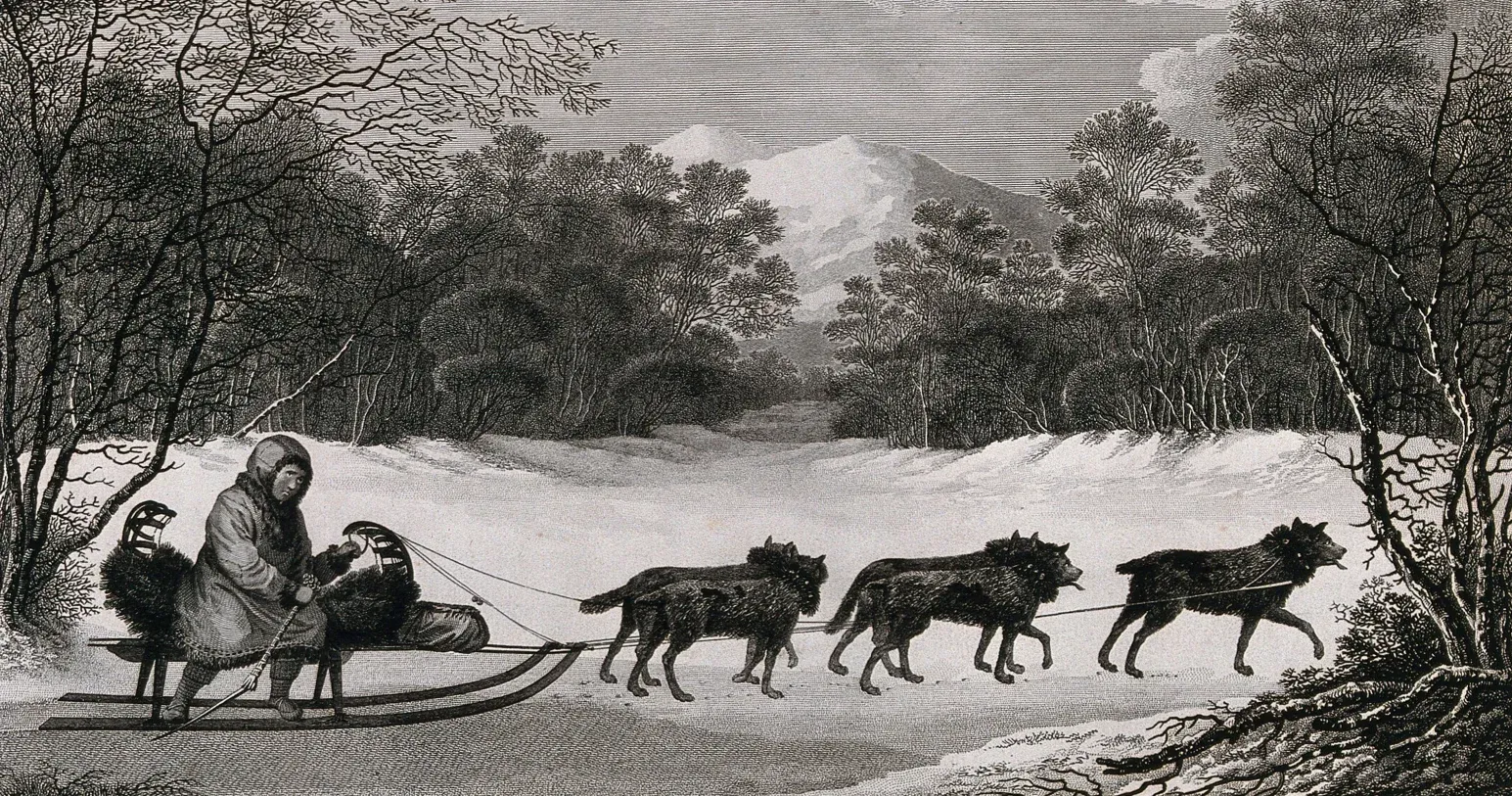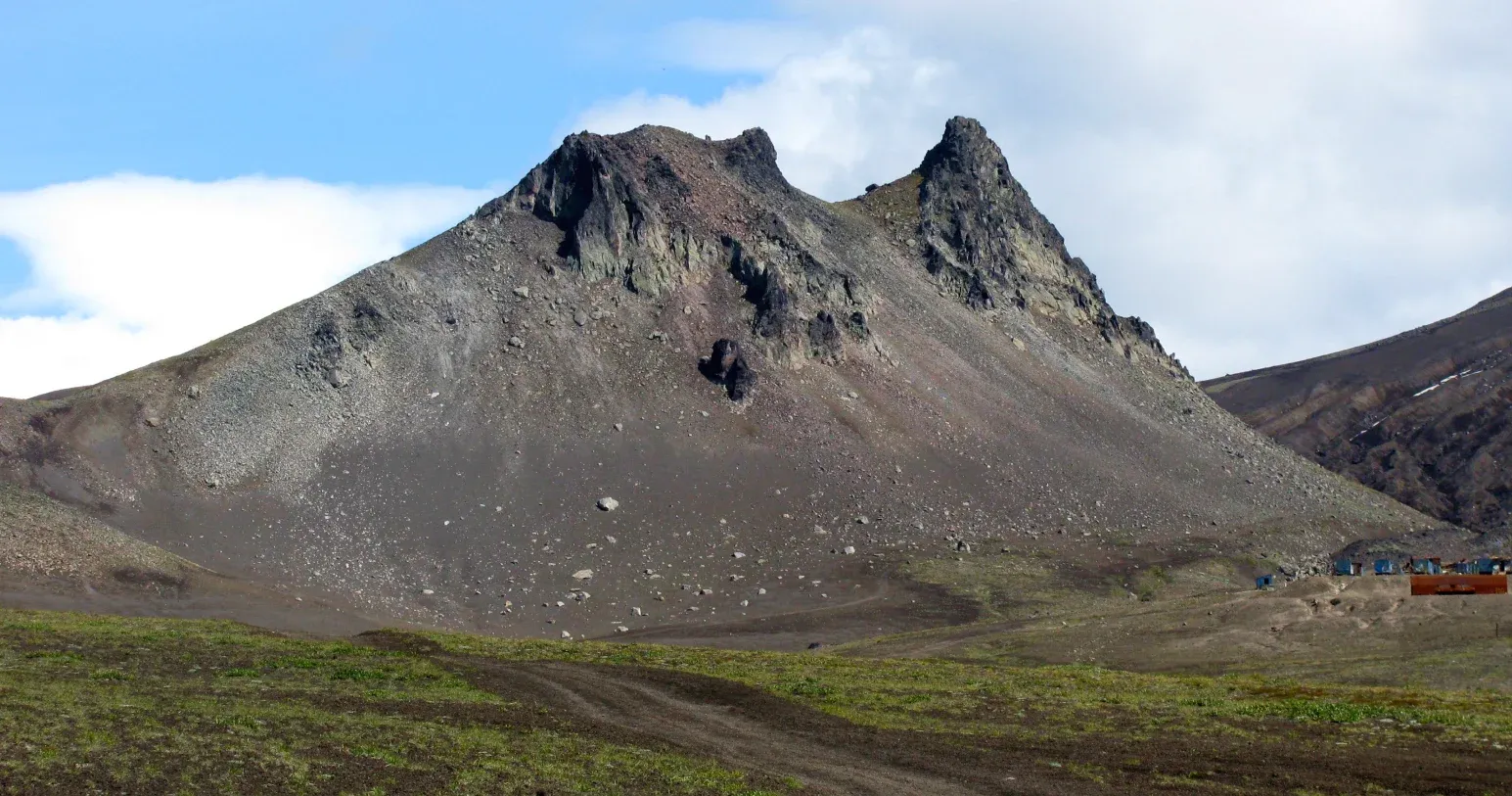
Kamchatka Is a Strange Place: Black Beaches, Red Caviar and Brown Bears
What to see and do on the fire-breathing peninsula
The end of August in Kamchatka is the height of the Far Eastern summer, the peak season of fresh caviar, whale safaris and trekking to volcanoes. In short, it is the best time to fully appreciate the treasure peninsula.
Completely Wild Idea
The sweet word «Kamchatka» appeared on maps in the middle of the 17th century, but local historians still argue about its meaning. According to one version, the river that gave its name to the peninsula is named after the Cossack Ivan Kamchaty. He was one of the first Siberian explorers-adventurers, died in a skirmish with local tribes, but managed to impress them with his fearlessness. According to another version, the word came from the language of the Ainu people who lived here and means «Big Exploding Land».
In any case, there was only a word in the beginning. «There has been news about the Kamchatka land for a long time, but for the most part, one could only know that this land exists in the world,» wrote Stepan Krasheninnikov, the first explorer of the peninsula, who compiled a two—volume description of it in 1755. At about the same time, the first Russian fortress — Petropavlovsk Harbor — appeared in Avacha Bay. Half a century later, it even received the status of a city, becoming Petropavlovsk-Kamchatsky. However, it cannot be said that this made Kamchatka any more accessible.




This far corner of Russia’s geography remains almost as wild as it was three hundred years ago. The peninsula, which exceeds the size of Great Britain, is home to fewer people than Kaluga, yet it has three nature reserves, five natural parks, 19 wildlife sanctuaries and 169 specially protected natural objects. There are amazing plants growing here, outlandish animals, volcanoes erupting, hot rivers flowing, and it all looks wildly beautiful.
Peninsula's Opportunities: A New Level
Kamchatka’s pristine nature has its disadvantages: the service here is mostly quite wild too. However, in the last few years, the situation has changed quickly and radically. Charters and budget fares for flights to the Far East have appeared, prices for ready-made tours have decreased, and the number of offers of local tour bureaus and private guides has increased many times. Now there is something to do on the peninsula not only for lovers of fishing and hiking.
Most importantly, there are more and more new, really comfortable accommodation options: private mini-hotels, guest houses, apartment complexes and even glamping sites. And the first five-star hotel Kamchatka Chalet was opened in July 2023. It is 40 minutes away by car from Petropavlovsk and Yelizovo airport, in the village of Paratunka, famous for its hot springs. There is a building with designer rooms and separate chalet cottages, a gastronomic restaurant, a children’s club, a caviar shop, a spa center with a Russian bath, a large geothermal pool and a jacuzzi with a view of the Vilyuchinsky volcano. Excursion programs of any complexity from helicopter tours to cruises on the luxurious yacht «Galatea» are organized for guests.





Otherwise, Kamchatka has not changed at all. You are still waiting for grader roads, which require a SUV and a driver with strong nerves, untouched nature and unafraid bears.
Impressions Are Fire
Volcanoes of the highest concentration per square kilometer and of all existing types from small mud volcanoes to grandiose stratovolcanoes of the correct conical shape are waiting for you. In total, there are more than 300 of them on the peninsula, more than three dozen active ones. They smoke, eject ash and slag, regularly erupt, adding to the tourists truly vivid impressions.

Volcanoes can be admired from the air during a helicopter tour, an obligatory point of any Kamchatka program (here these adventures are much cheaper than in other regions). Helicopters fly right over smoking craters and land on lava plateaus near acid lakes in calderas.
You can climb to the craters on your own. The simplest and most popular routes, accessible without special training and equipment, are to Tolbachik, Gorely, Mutnovsky and the nearest to Petropavlovsk «home» volcanoes Avachinsky, Kozelsky and Koryaksky. Such programs are organized, for example, by Russia Discovery.





An easier hike is the ascent to Verblyud extrusion, a massif of frozen magma between the Avachinsky and Koryaksky volcanoes. The trip takes only two or three hours, from the double-humped top you can see the whole Avachachinskaya Bay and two picturesque volcanic cones at once, and on the way, you can walk along the snowfields and talk to friendly gopher-eurazhka and red foxes.
If you want to learn everything about volcanoes, you should definitely visit the «Volcanarium» — the main museum of Petropavlovsk-Kamchatsky. You will be told about the structure of fiery mountains and the work of volcanologists, samples of lava and volcanic bombs will be shown, and even a real small eruption will be arranged for you.




Let's Move on to Water Procedures
Kamchatka’s landscapes sometimes have a completely alien appearance due to volcanic activity, and the bays are covered with black titanium-magnetite sand, which is perfectly magnetic. Especially impressive is the 50-kilometer-long Khalaktyrsky beach, located an hour’s drive from Petropavlovsk. It is considered one of the best surf spots in Russia, and the season is all year round. However, you will need wetsuits for surfing: even in summer the water rarely warms up above plus 15 degrees because of the cold current.




Hot springs are attached to the cold ocean in Kamchatka. The village of Paratunka is especially famous for them, where the largest water park in the Far East is opened, and the Nalychevo Nature Park, which has more than 200 thermal springs. There are also absolutely wild bathing places: hot streams, rivers, lakes and even waterfalls. There are especially many of them in the area of Dachnye springs at the foot of Mutnovsky. They are called the Small Valley of Geysers. But there are no real geysers there, you can see them only in the Valley of Geysers in the Kronotsky Reserve, and that trip there is another obligatory point of the summer Kamchatka program.




As well as whale safaris. Orcas, humpbacks and gray whales come to Avachinskaya Bay and the waters of the Kronotsky Reserve to eat fish in the summer. You can see their fountains, fins and tails waving in a friendly manner almost on every sea walk, and if you are lucky, you can see their famous jumps.

Bear Corner
Whales know what they are doing when they come to Kamchatka’s shores for fish, because the local water area is incredibly rich in fish, and you can make sure of it on any sea trip. In the vicinity of Russkaya Bay fishing turns from a meditative process into a sportive one: weighty sea perch and terpugas bite so often that your hands get tired of pulling them out of the water. The rich catch is complemented by picturesque islands and coastal cliffs, bizarre kekura rocks sticking out of the waves like fingers, noisy birds and rookeries of seals and sea lions warming their flanks in the sun.



River fishing is no less exciting. All six species of Pacific salmon are found in Kamchatka, and in summer they all take turns spawning, filling the rivers and lakes. At this time of year you can become a witness of a unique spectacle, when Kamchatka bears come out to hunt for salmon together with humans. The most popular places to observe these animals are Kurilskoye Lake in the South Kamchatka Wildlife Refuge and Dvukh-yurtochnoye Lake in the Ust-Kamchatka District.
In general, you don’t even need to make any special efforts to meet with bears in Kamchatka; it is said that every path here is a bear’s path and they are the full-fledged masters of the peninsula. Of course, the animals do not walk the streets, but ask any local resident, and you will immediately hear at least two unfictional bear stories.



Dance Oneself to Exhaustion
The inhabitants of the peninsula call themselves Kamchadals. The unusual name appeared and took root in the late 18th century, when Siberians and residents of other regions of Russia who moved to these lands finally mixed with the local Koryaks, Itelmens, Ainu and Even.
But many indigenous tribesmen still retain their national identity, customs and traditions. The best way to get acquainted with them is to plan a trip to a big national festival, which happens almost every month. For example, Alkhalalai, the Itelmen festival of fall and harvest, is celebrated in mid-September. Its culmination is a grandiose dance marathon, couples dance tirelessly and without respite. The record is more than 17 hours in a row, set a few years ago!



Demonstration versions of dances and rituals are shown in ethnographic centers, of which there are more than a dozen on the peninsula. You can get acquainted with the culture and life of the Koryaks at the Kainyran centers and ethnographic museums in the villages of Palana and Esso. You can learn about Itelmens at the Pimchakh tribal camp and at the Aushin ethno-cultural center, and about Evenaks at the Menedek camp. You can learn about Kamchatka’s riding traditions at the traditional kennels «Khalch» and «Snow Dogs», and the performances of the youth ensemble «Koritev» are attended by representatives of all indigenous peoples of Kamchatka.



Caviar of Thrones
Take a bigger suitcase and leave some spare room in it when you go to Kamchatka: you want to buy everything at the fish market in Petropavlovsk-Kamchatsky. Local products make no less impression than volcanoes and black beaches. The rich flavor of Pacific red fish does not compare with pale farm salmon, the size of crabs amazes the imagination, and fresh caviar «pyatminutka» is radically different from canned, and it is really eaten by spoons in the end of summer.
In Kamchatka you should also try the local salmon soup, fish pelmeni, dishes made of chinook salmon and halibut, and, of course, crabs in all kinds (even shaurma is made with them here!). Another memorable local peculiarity is Kamchatka wild herbs: young ferns, sweet borschyvik, ramson and forest berries, such as knyazhenika, honeysuckle, shiksha (crowberry) and sweet Kamchatka Mountain ash, from which delicious jam is made.



If earlier you had to ask to visit Kamchadals for a tasty lunch, today there are already decent restaurants on the peninsula. The top lines of the local gastrotop are occupied by restaurants «Two Seas. Ocean», «Da Vinci», «San Marino» and Local Kitchen in Petropavlovsk-Kamchatsky, Mishka and «Los-Losos» in Paratunka, as well as the new restaurant «Bering» in Kamchatka Chalet. Don’t miss cod liver with dried cherries and venison carpaccio with fern.
Kamchatka cuisine has only one serious disadvantage: once you try it, you will always want more. However, this applies to the whole peninsula.




Photo: Sasha Panarin (2), Gala Iv, Mariya Tereshkova (3), Daniil Silantev, Alex Glebov, Ivan, — Unsplash; Wellcome Collection; DR; kuhnmi CC BY 2.0 (1) — Flickr; Екатерина Павлюченко — Kamchatka Chalet (9); Kamchatka Chalet (2); JeneChe CC BY-SA 4.0 (1), Creambirdy CC BY-SA 4.0 (1), Отачкин А.Е. (1), Rost.galis CC BY-SA 4.0 (1), Алексей Чернышев1 CC BY-SA 4.0 (1), Alphatetia CC BY-SA 4.0 (1), — Wikimedia Commons; Tatiana Ivkovich, Evgeny Fonin, Giuseppe_D'Amico, Onyx9, Alexander Piragis (2), Theerawan, Shaganart,— Shutterstock/FOTODOM; © Ольга Логвинец — Фотобанк Лори






